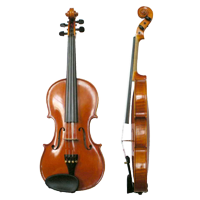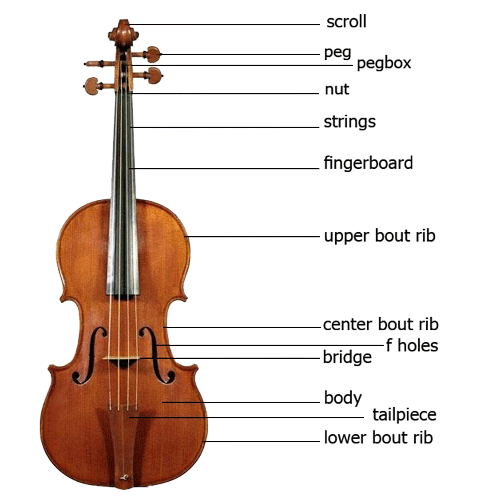» Organology » Violin

Family
string instruments
Description
Violin is the soprano member of the family of string instruments which is the smallest in size. In the Hornbostel-Sachs system the violin is classified as “chordophone”.
The violin is one of the most perfect instruments acoustically and has extraordinary musical versatility. In beauty and emotional appeal its tone rivals that of its model, the human voice, but at the same time the violin is capable of particular agility and brilliant figuration, making possible in one instrument the expression of moods and effects that may range, depending on the will and skill of the player, from the lyric and tender to the brilliant and dramatic. Its capacity for sustained tone is remarkable, and scarcely another instrument can produce so many nuances of expression and intensity. The violin can play all the chromatic semitones or even microtones over a four-octave range, and, to a limited extent, the playing of chords is within its powers. In short, the violin represents one of the greatest triumphs of instrument making. From its earliest development in Italy the violin was adopted in all kinds of music and by all strata of society, and has since been disseminated to many cultures across the globe (see §II below). Composers, inspired by its potential, have written extensively for it as a solo instrument, accompanied and unaccompanied, and also in connection with the genres of orchestral and chamber music.
The most important defining factor of the Western orchestra, ever since it emerged during the 17th century, has been the body of ‘strings’ which in orchestra is the violin-family instruments, however The violin and violin family had originated well before the 17th century. The details of the evolution of the violin are not clearly recorded but it was adapted from medieval instruments such as “fiddle”, “rebeck” and “lira da braccio” about 1550. Primary violins were not different from existent violins and had four strings, peg box, similar waist and ƒ holes. Violin making was started in 16th century in Italy and it was flourished by well-known makers for instance Stradivari, Guarnery, Amati etc.
Composers
famous composers such as Vivaldi, Tartini, Bach, Mozart, Beethoven, Mendelson, Brahms, Tchaikovsky, Stravinsky, Prokofiev etc. has started to write for the violin since 18th century and extended its techniques to a considerable degree.
Players
The players who had an enormous impact on violin playing could be listed as Rode, Baillot, Viotti, Torelli, Pisendel, Corelli, Trtini, Vivaldi and some great contemporary players could be named as Itzhak Perlman, Gidon Kremer, Jascha Heifetz, Yehudi Menuhin, David Oistrach, Maxim Vengerov, Anne Sophie Mutter and Sarah Chang.
Violin parts

Violin playing range

Pitches of open strings

Audio Sample
Title: Romance in G major
Artist: Beethoven

